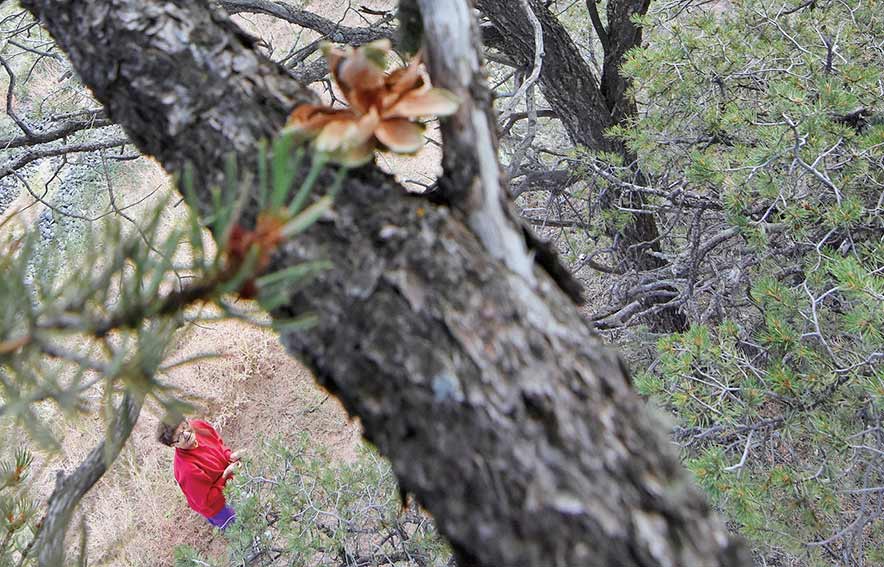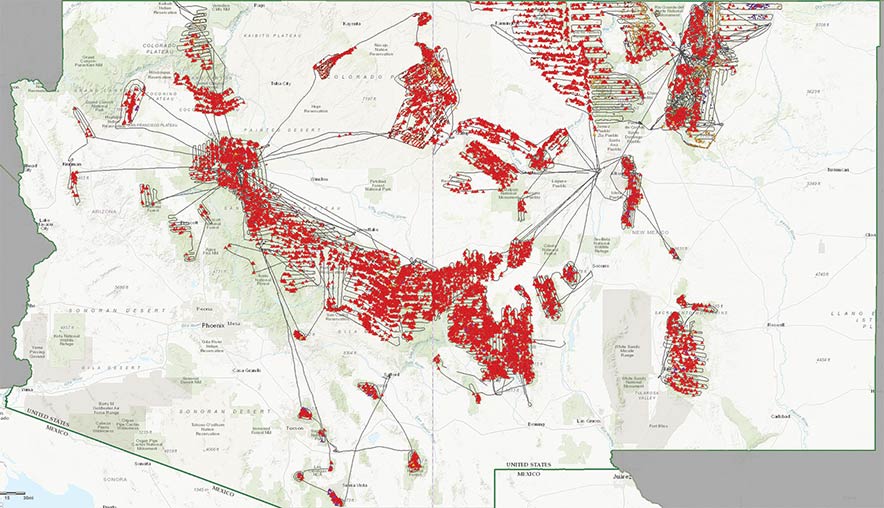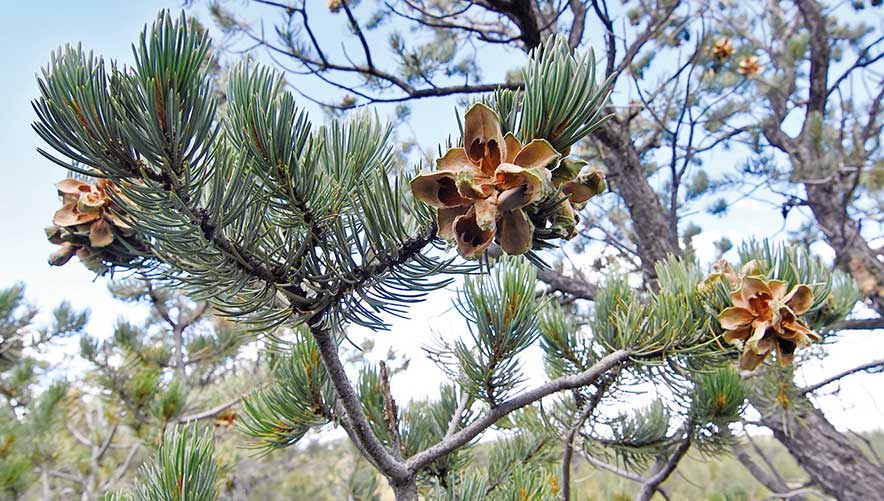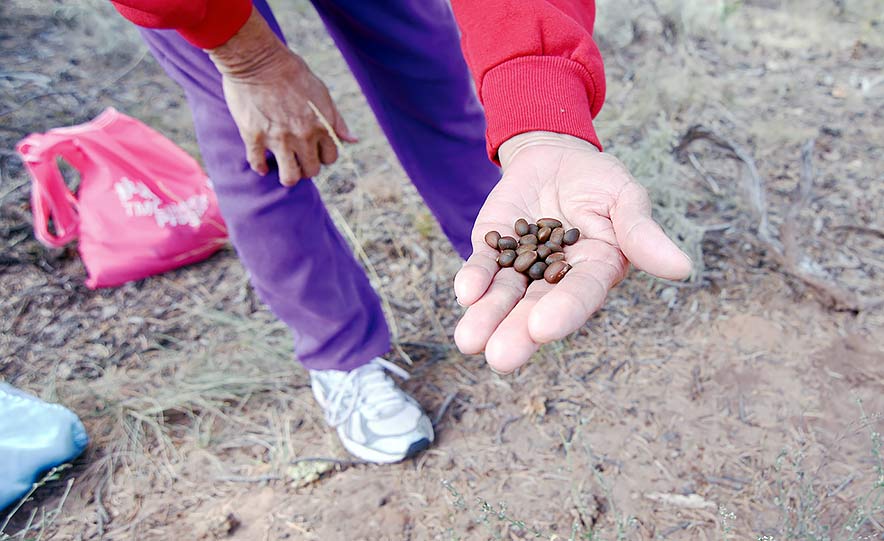
No piñons: Beetles, drought, dying trees cause no crop this fall

Navajo Times | Donovan Quintero
Carol Slinkey from Fort Defiance looks up the juniper tree while she picks piñons on Sept. 16, 2015, near Cross Canyon, Ariz.
WINDOW ROCK
Navajo Nation, good luck finding any piñons on the rez.
Why? Because of the long sustained drought that has afflicted the region, the resulting desertification and overgrazing.

Courtesy U.S. Forest Service
A map from the the U.S. Forest Service depicts areas that have been infested by various types of bark beetles across the Navajo Nation, Arizona and New Mexico. According to the map, are than 300,000 trees have been affected.
The climactic affects gradually weakened the piñon trees and brought a whole slew of bugs that didn’t waste any time attacking the languishing trees.
Bugs like the Pinyon Ips Beetle, Ponderosa Pine Bark Beetle, Bark Beetle, Douglas-Fir beetle, Spruce Beetle, Western Balsam Bark Beetle, Fir Engraver and Cedar Bark Beetle have invaded forests.
Aided by the drought’s devastating desertification affects, the bugs spawned and multiplied across the region, including the Sandia and Manzano Mountains next to Albuquerque and the San Francisco Peaks in Flagstaff.

Navajo Times | Donovan Quintero
Cones containing piñon nuts from a juniper tree sit high above piñon pickers on Sept. 16, 2015, near Cross Canyon, Ariz.
The result is hundreds of thousands of trees being eaten alive and dying.
According to the 2018 Forest and Disease Conditions Southwestern Region survey conducted by the U.S. Department of Agriculture, the hardest hit areas are in the Apache-Sitgreaves National Forests in central Arizona and the White Mountain Apache Reservation, followed by the Gila National Forest in southwestern New Mexico, and the San Carlos Apache Reservation.

Navajo Times | Donovan Quintero
Carol Slinkey from Fort Defiance shows a handful of piñon nuts she picked on Sept. 16, 2015, Cross Canyon, Ariz.
Those areas have been devastated by the Ponderosa Pine Bark Beetle that has affected more than 300,000 trees.
The Navajo Nation is no exception.
The Chuska Mountains, Black Mesa and the Gallina Mountains near Alamo have also been hit hard.








 Highway 264,
Highway 264, I-40, WB @ Winslow
I-40, WB @ Winslow